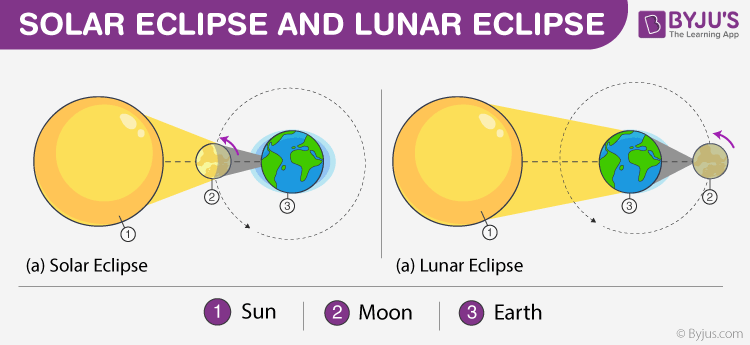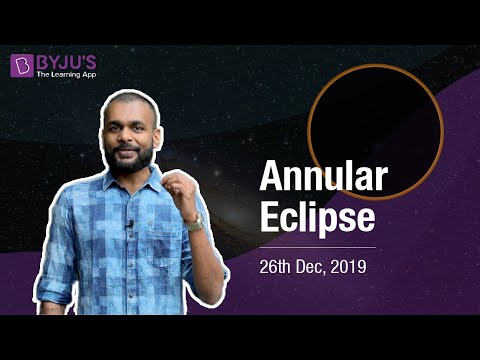
An eclipse happens when one celestial body blocks another in the observer’s line of sight. Lunar and solar eclipses are events when the sun, moon, and earth are tandem.
- Solar eclipse: For a solar eclipse to occur, the moon should be between the earth and the sun.
- Lunar eclipse: For a lunar eclipse to occur, the earth should be between the sun and the moon.
Here, in this article, let us look at the various differences between a solar eclipse and a lunar eclipse.
Read More: Celestial Body
Solar Eclipse vs Lunar Eclipse
| Solar Eclipse | Lunar Eclipse |
| Solar eclipse is the one in which the moon is in between the earth and the sun. | Lunar eclipse is the one in which the earth is in between the sun and the moon. |
| It occurs once in 18 months. | It occurs twice a year. |
| It lasts for about 5-7 minutes. | It lasts for an hour. |
| It is witnessed in a few places. | It is witnessed in many places. |
| It occurs during day time. | It occurs during night time. |
| The solar eclipse happens in the new moon phase. | When the moon is in its full moon phase, a lunar eclipse happens. |
| If you look directly, then there are high chances of losing vision as it damages the retina. | Witnessing a lunar eclipse with bare eyes is harmless as it does not cause any damage to the eyes. |
Scientists eagerly wait for an eclipse to occur because the effect it has on all life on earth is of particular interest to them. Solar eclipse helps scientists to gather more knowledge about the sun and its position with respect to the sun.
Stay tuned with BYJU’S for more such interesting articles. Also, register to “BYJU’S – The Learning App” for loads of interactive, engaging Physics-related videos and unlimited academic assistance.
Also Read:
| Difference Between Science and Technology | Difference Between Data and Information |
| Difference Between Comet and Asteroids | Difference Between Meteor and Meteorite |
Watch This Interesting Video on Rare Annular Solar Eclipse to Learn More about This Amazing Phenomenon


It is very helpful thank u so much